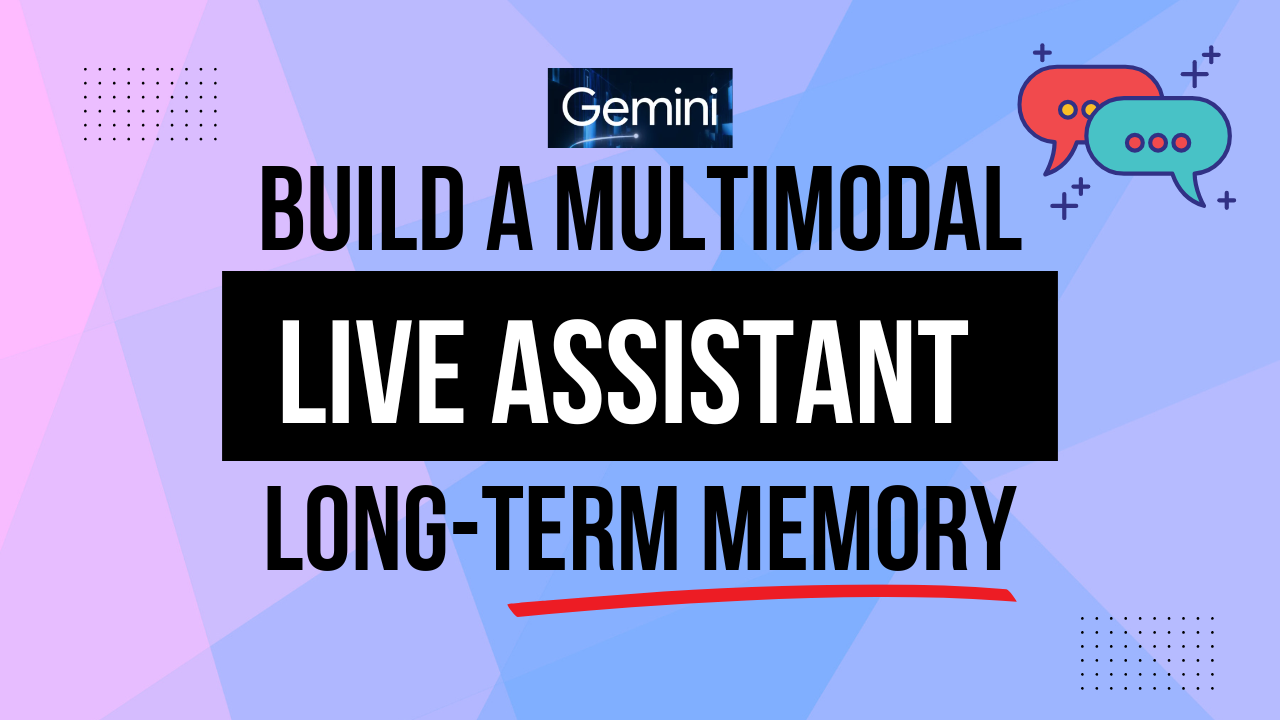Building a Gemini Realtime Learning Assistant with Long-Term Memory
Gemini Multimodal Live Application
The latest version of Google's Gemini 2.5 Pro just dropped. It's impressive, especially in multi-step reasoning, coding, and long context, and its performance on the benchmark is so impressive than the other mainstream models. The key is, it still cannot handle audio output. With the only supported data type for output being text, so if you're building anything that needs real-time audio, even with images, you are stuck using the older Gemini 2.0 Flash model for now.
Just like what we have done before, when we used the live API, the only model that we can use is the Gemini 2.0 Flash Exp, which is an experimental model, free for use, but with limitations. I've been sharing tutorials on building different things with Gemini multi-modal live API, from the camera app to screen-sharing applications, but there's still an annoying problem. The Flash experimental model still has some pretty strict limits. If we move down to its documentation, you will see you only have two minutes for audio and video applications and 15 minutes for audio-only applications. There's no way around it, even if you are willing to pay for more sessions or more tokens for a certain API key. Once time's up, the connection drops, and the model forgets everything. Always a fresh start every time.
You may remember that I have made a tutorial about using a RAG system to build a document-searching chatbot using Gemini's multi-modal live API plus the LlamaIndex system for RAG functionality. Here, I want to explain why regular RAG isn't good enough for our voice assistant. First, basic RAG is pretty bad at finding the right information from personal conversations. It misses all the subtle things, the way people phrase things differently, the context that builds up over time. Second, saving entire conversations gets messy fast. The storage adds up very quickly. You can imagine when you save the whole conversation. Third, basic RAG doesn't get how things connect. It treats everything like separate pieces of information instead of seeing how concepts build on each other. For a tutor or a teacher who, in our demo today, really helps you to learn, we need something better. We need something that understands what you're talking about, tracks how you are learning, and changes its approach based on what works for you. That's where the Mem0 framework comes in.
Mem0: A Smarter Memory System
So, what is this framework, and what makes it so different? The Mem0 is a smart memory system, especially for AI applications. It's not just storing information; it's understanding it by using LLMs as well. Here's what it does: It gets meaning, not just the words. Mem0 uses embeddings and graphs to understand what conversations are actually about by keeping track of how different ideas and memories link together. Recently, they added support for a graph database for graph memory, that's managing the relationship tracking between different concepts and memories, which really shows how your knowledge grows over time.
And also, its usage of its open-source version is very simple, just a few steps, including installation and initial memory, add memory, then retrieve your memory. For the simplest application, if you want to expand, you can also choose different vector store service, or LLM configuration, embedding configuration, and a graph store configuration.
Installation
pip install mem0aiAdd Memories
from mem0 import Memory
m = Memory()
# For a user
result = m.add("I like to drink coffee in the morning and go for a walk.", user_id="alice", metadata={"category": "preferences"})Retrieve Memories
related_memories = m.search("Should I drink coffee or tea?", user_id="alice")Check out the documentation for more usage.
Demo: A Personalized Math Tutor
So, let's see the demo. Let me simulate a learning assistant based on a similar front end that we have used before to share the screen and talk to the model with multimodal realtime interaction.






